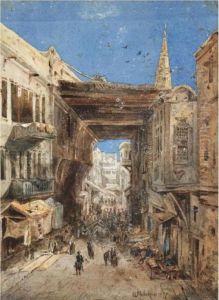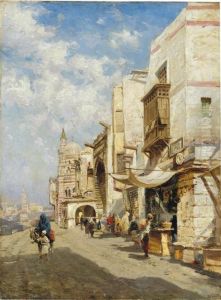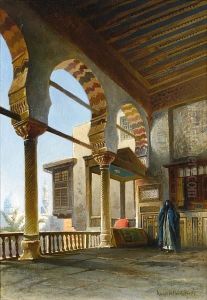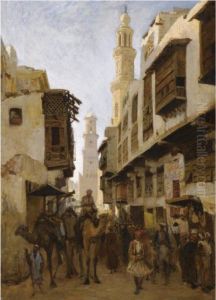Nikolai Makowski Paintings
Nikolai Makowski was a prominent Russian painter, born in Moscow in 1842. He was part of a well-known family of artists, with his brother Vladimir Makovsky also gaining recognition in the world of art. Nikolai's works were deeply influenced by the social and cultural dynamics of Russia during the 19th century, and he is particularly noted for his genre paintings that vividly captured the essence of Russian life and its people. His paintings are characterized by their narrative depth, attention to detail, and emotional resonance, making him one of the leading figures in the Russian realist movement.
Makowski received his initial art education at the Moscow School of Painting, Sculpture and Architecture. He further honed his skills and artistic vision at the Imperial Academy of Arts in Saint Petersburg, where he was influenced by the works of other Russian realist painters. Throughout his career, Makowski exhibited a profound empathy for the peasantry and the lower classes, often portraying their struggles, joys, and the simplicity of rural life with a poignant clarity and sensitivity. His work not only depicted the social realities of his time but also served as a commentary on the socio-political conditions of Russia, reflecting the artist's own perspectives on justice, humanity, and social reform.
Makowski's contributions to Russian art were widely recognized and celebrated. He received numerous awards and honors, including accolades from the Imperial Academy of Arts. His paintings were not only popular in Russia but also gained recognition abroad, contributing to the international appreciation of Russian realist art. Despite the changing artistic trends over the years, Nikolai Makowski's works have retained their relevance and continue to be celebrated for their historical significance, artistic craftsmanship, and emotional depth. The artist passed away in 1915, leaving behind a rich legacy that continues to inspire and captivate audiences around the world.



